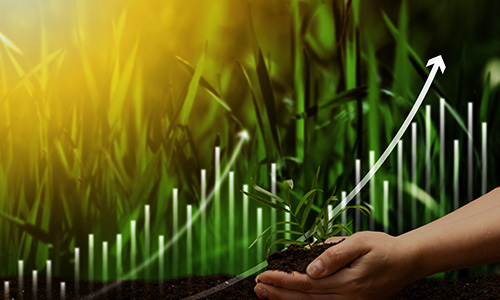News and Updates
The rise of sustainability demand
19-Nov-2023
2023 has seen increased focus on sustainability in steel; construction generally is headed towards a carbon-constrained environment – for example, state governments have targets of 30-75% emissions reductions by 2030.[1] While the focus has been on reducing carbon emissions due to operational energy consumption, the embodied carbon in structures is quickly becoming a focus. Industry initiatives like MECLA and NABERS are reflecting these changes.
This is stimulating the demand for low emission steel in construction. This is not a sector issue – other industries are also demanding green steel: electric vehicle manufacturers, for example, want materials with low or zero carbon emissions, in keeping with their broader zero emissions goals.
Industry developments
The Australian steel industry has made incremental changes in recent years, through improving energy efficiency to reduce consumption, looking at the efficient use of steel in structures, as well as launching new products.
Decarbonising electricity supply will play a major role in the enabling of low emission steel. The drive from the global push to carbon neutral is creating some interesting opportunities with some potential developments on the horizon: Green Steel WA is developing plans for an electric-arc furnace renewable energy-powered green steel recycling mill and a low-carbon technology hot briquetted iron (HBI) plant. In Whyalla SA, GFG Alliance plans to replace its coke-fuelled blast furnace with an electric arc furnace, reducing carbon emissions by 90%.[2]
Sustainability certification
The industry is increasingly recognising the importance of sustainable materials and striving to keep up, as the Australian market seeks compliant products that are recognised by Green Building Council Australia. The Sustainable Constructional Steel Certification scheme offered by ACRS has been developed over fourteen years, regularly updated and enhanced to move the industry forwards.
It’s important that schemes analyse the full lifecycle of a product. For example, steel processors/ fabricators’ environmental impact may be quantified through a lifecycle assessment (LCA) quantifying the kilograms of CO2e (carbon dioxide equivalent) per tonne of steel (i.e. the global warming potential or GWP). However, for steel manufacturers, environmental product declarations (EPDs) are presented to quantify not only the GWP but also the broader environmental impacts of manufacturing the steel products. The emissions produced by processing or fabricating steel are small compared to the steel manufacturer’s emissions. But a responsible fabricator/ processor should be presenting a verified account of their sustainability credentials, assessing and declaring their contribution to the carbon footprint in the creation of a product. By providing this, the total carbon emissions through the whole of the supply chain can be accurately determined.
In practice, a GWP for manufactured material is usually provided, and a processor takes this and adds their contribution for any processing and the downstream supply to the end user. Hence at the point of construction, the total GWP is known.
Understanding different schemes
When looking at sustainability schemes, it is important to ask what is being appraised: are there any measurable metrics that can be assessed, and are audits being conducted by independent third parties? The ACRS/CARES Sustainable Constructional Steel scheme, independent of steel manufacturers, requires SCS certificate holders to
- meet the ACRS Product Quality Standards
- have Quality Management System ISO 9001 certification
- have Environment Management System ISO14001 certification
- have Safety Management System ISO 45001 certification
- meet numerous environmental, social, and economic management requirements aligned with the UN sustainable guidelines
For transparency, the scheme also publishes an annual report that provides benchmarks based on manufacturing type, which enables meaningful comparison between producers and sites. These benchmarks are also adjusted with the goal to being carbon neutral by 2050.
ACRS continues to engage with global stakeholders for education and best-practice implementation of sustainability measures; we strive to help the industry move towards a more sustainable future.
[1] Except for WA. “WA to be only state without emissions reduction target for 2030”, ABC: “Australia's 2030 emissions reduction goals: Tasmania: Net zeroACT: 65-75%South Australia: More than 50%New South Wales: 50%Victoria: 45-50%Federal: 43%Queensland: 30%